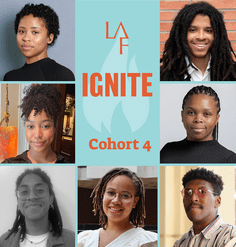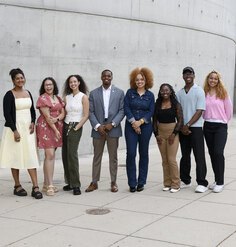Olmsted Scholar Feature: Climate, Water, and Infrastructure Resiliency in Phoenix
By Ashley Brenden, 2013 University Olmsted Scholar
My pH20enix Design Thesis Project evolved from current discourse on infrastructure resiliency and a United Nations report that predicts that by 2025 two out of every three people in the world will be facing water shortages. The project postulates that current trends in global climate change are likely to continue with increasing occurrences of ecological, social and economic disasters. It also asserts that global water shortage will be the largest and most far-reaching ecological, social and economic disaster that humans have faced. The basis of the project lies in a clear stance that our current infrastructure is not designed to meet the increasing demands placed on our social and environmental systems. In order to withstand inevitable natural and manmade disasters, we must, as designers, be forward thinking, utilizing a hybrid of design sensibility, aesthetic appreciation, and scientific thought.
My thesis project investigates the interrelationships of climate, water, and the urban form in Phoenix, Arizona and the implications for decision making under uncertainty. It envisions ways that Phoenix can transform into a sustainable urban model for addressing water scarcity. Progress towards sustainability of our urban environments requires careful examination of the effectiveness of dated jurisdictional and normative planning tools in dealing with contemporary urbanization concerns. By crafting zoning and policies that are more oriented towards the natural environment, we can promote a more integrated and responsive infrastructure.
The project proposes a decentralized water infrastructure configuration that makes use of existing natural and manmade infrastructure. By coupling small-scale, site-specific, decentralized water techniques with a larger-scale, integrative, above-ground canal structure a cyclical system is created that contributes to a stable environmental equilibrium. The theoretical design suggests a cyclical system in which water that is pulled into the municipal system from the Rio Salado and from Maricopa County ground sources be used, recycled, remediated and returned to the system in quantities equal to what was extracted. Site-scale techniques such as water demand reduction and rainwater harvesting contribute to lower overall extraction rates.
Above-ground water canal systems that run from North Mountain to South Mountain reintroduce the natural hydrology while collecting municipal building wastewater along the way. The system also provides microclimatic environments for social and ecological niches along its path. The canals are joined at the Rio Salado where the water is then returned to the natural circulation process, re-establishing the natural ecological habitat along the river.
The project goal was not to propose a complete solution to water shortage within the Sonoran Desert, but rather to initiate a discussion on ways to transform one of the world’s least sustainable cities into one that is a model of sustainability and resilience. The project asks “How do we design our cities to meet the needs of an increasing population in an increasingly volatile system?” and “How do we become more resilient?”.
Ashley received her Master of Landscape Architecture degree from the Arizona State University Design School in May. She currently works in Seattle as a Landscape Designer for Mithun.










